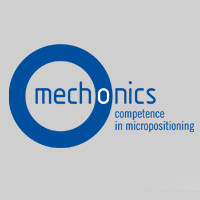Miniature translastion stages with free opening
81825-D München
2/B Unnützstrasse
+49 89 42024207
+49 89 42024206
Miniature translastion stages with free opening
Anfrage an Anbieter senden
- Central Aperture: These stages feature a central opening or aperture through which objects, light, or other equipment can pass. The size of the aperture may vary, and it's important to select a stage with an opening that accommodates your specific needs.
- Compact Design: Despite the central aperture, these stages maintain a compact and rigid design. This allows for precise and stable motion along one or more axes while maintaining the open space.
- Precision Movement: Miniature translation stages with free openings provide high-precision linear motion, often with sub-micron or nanometer-level resolution. They are suitable for applications where precise positioning is crucial.
- Linear Motion Mechanisms: These stages can use various linear motion mechanisms, such as ball screws, lead screws, or piezoelectric actuators, depending on the desired motion characteristics and application requirements.
- Load Capacity: Consider the weight and size of the objects or tools that need to pass through the opening, as the load capacity of the stage is essential to ensure stable and reliable operation.
- Feedback Systems: Many stages come with integrated feedback systems, such as encoders or sensors, to provide accurate position information for closed-loop control and positioning accuracy.
- Materials and Construction: Miniature translation stages are typically constructed from materials with low thermal expansion coefficients and high rigidity to minimize thermal drift and ensure stability during operation.
- Drive Mechanisms: These stages may be manually operated, motorized, or equipped with various drive mechanisms to provide precise control over the movement. The choice of drive mechanism depends on the application's requirements.
- Integration: Consider how the stage will integrate into your overall system, especially if it needs to work alongside other equipment or devices. Some stages are designed for easy integration.
- Customization: Manufacturers often offer customization options to meet specific application requirements, including different sizes, materials, motion characteristics, and aperture sizes.
For high vacuum conditions up to 10^(-9) mbar
8 mm travel at 38 x 42 mm footprint
Free aperture of 10 mm for ray passage
.png)


